Built to honor the Roman goddess of peace, the Ara Pacis is a stunning example of early Roman sculpture. The altar symbolized the establishment of peace in the Roman Empire.
History of the Altar
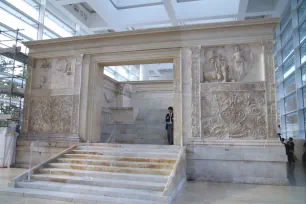
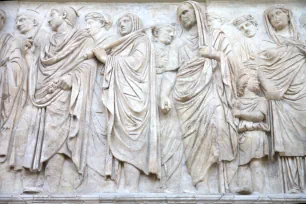
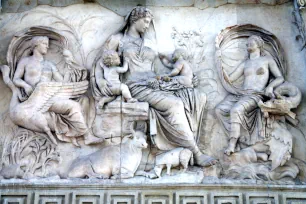
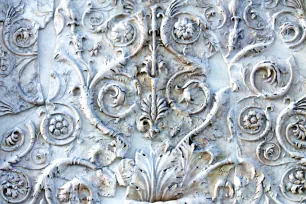
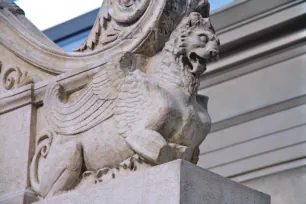
Originally named Ara Pacis Augustae after Emperor Augustus, but usually shortened to just Ara Pacis, the altar was consecrated in 9 BC as the Altar of Majestic Peace. It was commissioned by Emperor Augustus to celebrate his victories in Gaul and Hispania (now France and Spain) and the establishment of peace in the Roman Empire. In its time, it was considered one of the most important monuments in Rome.
It is said that the altar represents the peace and prosperity achieved as a result of the time period known as the Pax Romana (Roman Peace), which occurred between the years 27 BC to 180 AD. The altar is located in what was known as Campus Martius, an area in the flood plain of the Tiber river. It was placed in such a way that the shadow of the obelisk on the Campus Martius (now on the Piazza di Montecitorio) would fall on the Ara Pacis on the birthday of Emperor Augustus.
Throughout the centuries, the monument became buried under silt, and the first sculptures weren’t rediscovered until sometime in the sixteenth century.
The Design of the Altar
The Ara Pacis was sculpted from white marble. The scenes found on the altar depicted traditional Roman piety. The emperor and his family figured prominently on the altar’s sculptures. Figures of priests and other individuals wearing laurel crowns of victory can also be found on the Ara Pacis. There is still debate on the meaning of some of the panels (in particular the one on the east side) but what is certain is that the reliefs on the north and south side of the altar show a procession that effectively took place on the 4th of July 13 BC. Inside the Ara Pacis was the actual altar table, decorated with sculptures of winged lions.
Most notable about the figures on the altar is the fact that they are a classic example of Roman sculpture. Unlike Greek sculpture, the figures actually resemble real individuals and are not idealized.
Protecting the Remains
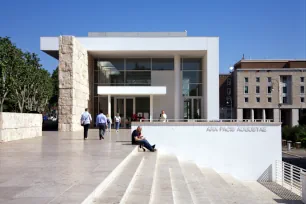
Over the centuries, pieces of the Ara Pacis were discovered, but it wasn’t until 1938 that Benito Mussolini decided the remains needed to be protected. He had a structure built specifically for that purpose at the original location of the altar, near the Mausoleum of Augustus. However, that building is no longer standing. It has been replaced by a pavilion designed by Richard Meier, a renowned American Architect. The modern pavilion houses the Museo dell’Ara Pacis, the Ara Pacis Museum, which opened in 2006.
Today, the Ara Pacis as displayed in the museum is a combination of original fragments found on site that stayed in Rome, and of plaster casts of original fragments that now sit in museums around the world.
- Next: Aurelian Wall
- More Rome Ancient Sights
- More Sights & Attractions in Rome

